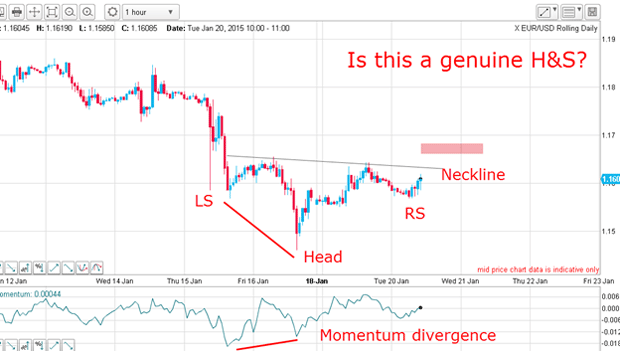
It has been two weeks since Mario Draghi announced the European Central Bank (ECB) would start printing oodles of euros.
Conventional wisdom says this announcement should make the euro fall in value (the more euros Draghi prints, the less each individual euro is worth).
The conventional story is wrong, though. The euro hasn’t crashed the way many said it would. The market was expecting money printing (AKA quantitative easing (QE)) in the eurozone, so when the announcement came, it was already factored into the price of the euro.
I am always on the lookout for weird events like this. When a market fails to react in the expected way, it can reveal important trading opportunities.
The euro is only the most recent example.
We saw the same thing happen last year when the Fed announced its most recent money-printing programme. After the Fed announced the programme, the dollar started a rally that is still ongoing.
When a market makes such a contrary move, there is obviously something else going on besides the QE effect.
A new trend is coming
In any market trend, there is usually one over-riding theme in the minds of traders who are driving that trend. For example, in recent months, the theme for euro traders has been that the eurozone economy is weak and the break-up with Greece is imminent. That theme, along with the promise of money printing, has been driving down the value of the euro. Seems logical, right?
But as the trader Joe Granville loved to say, “When it appears obvious to the majority, it is obviously wrong”.
So when a trend changes direction, that means a different theme has become dominant – but it may not become apparent to traders for some time. In the meantime, the market churns as traders try to figure out what they should believe! This period can be a nightmare to trade.
So the question is this: now that the market has digested the news about the eurozone money-printing blitz, is there a new theme emerging? Will we see a euro recovery? That would certainly be against majority opinion.
In my post of 21 January, I noted a ‘head and shoulders’ pattern, which is a well-known reversal pattern. A reversal pattern indicates the main trend is about to change.
This was the chart I had then:
All it would have taken to verify the head and shoulders pattern would have been a move above the ‘neckline’ into the pink zone.
So did the market move into the pink zone after 21 January? Let’s update the chart to this morning:
The market broke above the neckline on Monday, 26 January. That gave me confirmation of the head and shoulders pattern, and so of the trend reversal.
After it broke the neckline of the head and shoulders pattern, a beautiful wedge pattern started to emerge.
When a market changes direction, it often enters into a churning phase with no clear direction up or down. The wedge pattern describes this perfectly. But eventually, a decision is made and the market moves out of this wedge – usually violently.
Yesterday, the market broke strongly upwards out of its wedge pattern.
The euro is going up
Now let’s look at the bigger picture to put all this short-term action into context. Here is the expanded hourly chart:
I can see an Elliott-wave pattern forming. There are five waves down to the 1.11 low. And according to Elliott wave theory, that forecasts a change in trend.
And in addition to that, yesterday, the market broke through my upper tramline – added confirmation the trend has changed direction.
Conclusion? Shorting the euro is not a one-way bet any more.